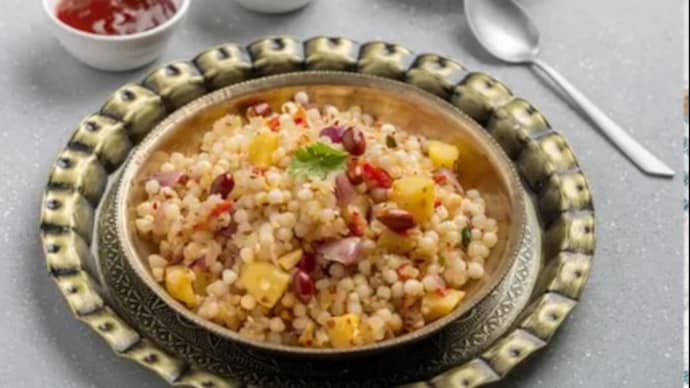Listen to Story

Navratri fasting feels insufficient without sabudana (or sago) since we’ve concerned think, through rumor, that it’s “healthy”.
Is it?
Sabudana, likewise referred to as tapioca pearls or sago, is originated from the cassava root and is generally utilized to make meals like khichdi, vada and kheer.
It is a popular food throughout Navratri as individuals quick for 9 long days and sabudana assists them remain fuller for longer hours and is dietary; a minimum of that’ s what individuals think.
Given that it is a revered food not simply throughout the fasting season however a breakfast staple for lots of, we talked to specialists who shared their insights on the exact same.
Nutritional worth
Sabudana is high in caloriesmainly due to its carbohydrate material, with 100 grams supplying 332 calories. It consists of a percentage of protein (1 gram) and fat (1 gram) however is abundant in carbs (83 grams), making it a thick source of energy.
Sabudana likewise consists of dietary fiber (1 gram) and important minerals like zinc (11 percent of the Recommended Daily Intake).
Chandigarh-based Jashan Vij, health and weight loss coach, informed India Today“ Some think about sabudana a healthy breakfast alternative due to its high carb material, offering fast energy.
It does not have considerable protein, fiber, and micronutrients. Consuming it alone might cause blood sugar level spikes and subsequent crashes, making it less perfect for continual energy and satiety.”
We understand at least one thing now, sabudana might be a go-to choice when you are fasting, however if your objective is to lose weight, consuming it may not be an excellent option.

Is sabudana processed?
Sabudana is originated from the roots of the cassava plant through a comprehensive production procedure. The starch from the cassava or tapioca root is drawn out, cleaned up, and after that processed into little, pearl-like spheres.
These pearls are more processed, frequently steamed, to produce the white sabudana pearls that we typically discover in markets.
Sabudana goes through processing to change cassava starch into the pearl-like beads that we purchase from the supermarket. This processing includes soaking, squashing, and drying the starch, which changes its natural type,” Jashn Vij stated.
While it might not be as greatly processed as some other foods, sabudana does go through considerable processing compared to entire, unprocessed grains. The remainder of the processing depends upon how you prepare and serve,” he included.

Is it perfect for vrat or fasting?
- According to Ayurveda, sabudana is a cooling food that successfully stabilizes the pitta dosha (heat in the body) and offers a considerable energy increase.
- This lines up with the dietary constraints and requirements throughout fasting durations when the body needs nourishment to keep energy levels without taking in grains.
- The high carb material of sabudana, almost 90 percent, makes it an immediate source of energy, which is vital throughout fasting when the consumption of routine meals is limited.
- In spite of it doing not have in minerals and vitamins, its function as a pure starchy item loaded with carbs fills the space for instant energy requirements throughout fasting.
- Sabudana is likewise simple to absorb. It is appropriate for intake on an empty stomach.

Suvarna Sawant, primary diet professional and HOD of medical nutrition and dietetics, Nanavati Max Superspeciality Hospital, stated, “ While you are fasting, fast and quickly absorbable sources of energy are chosen. Sago, being abundant in carbs, can be an appropriate choice throughout such times. It must not be relied upon as a routine or daily food due to its restricted dietary material.”
Who should keep away from sabudana?
Individuals with diabetes are recommended to restrict or prevent sabudana intake.
Due to its high carb material, sago is not suggested for people with diabetes as it can cause quick spikes in blood glucose levels,” Suvarna Sawant stated.
individuals on a weight-loss journey might wish to avoid sabudana. Its high-calorie and high-carbohydrate nature, combined with a low material of protein and fat, does not line up well with the concepts of weight management.
While sabudana’ s capability to supply a fast energy increase may appear attractive, however it might possibly result in increased appetite and overindulging, consequently preventing weight-loss efforts.
Once again, individuals with metabolic health concernssuch as high blood pressure, weight problems, and heart problem, are likewise advised to prevent sabudana.
To take in or not?
Let’ s simply state, all of it depends upon your top priorities, and what objectives you need to accomplish.
While sabudana can be part of a well balanced diet plan for lots of, people with diabetes, those on a weight reduction diet plan, and individuals with metabolic health problems and gastrointestinal conditions may gain from restricting or preventing sabudana to keep ideal health.



